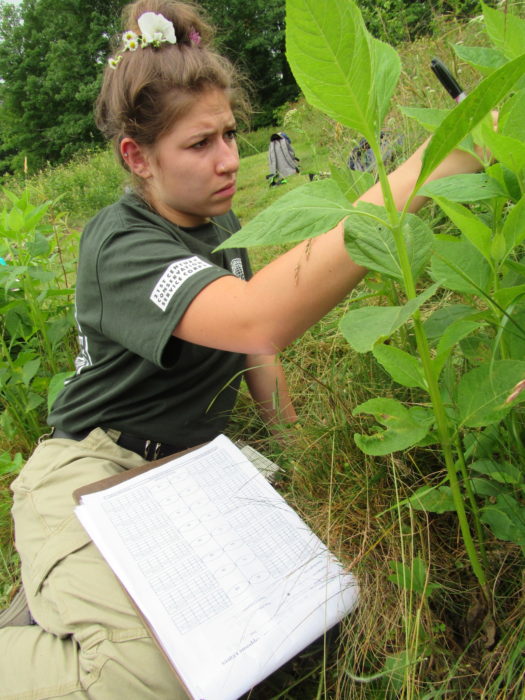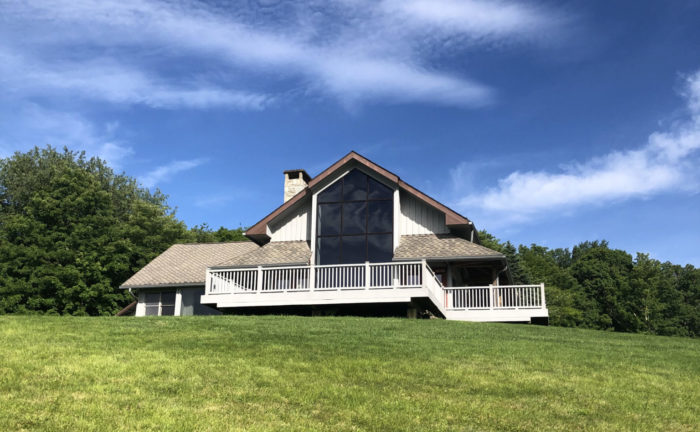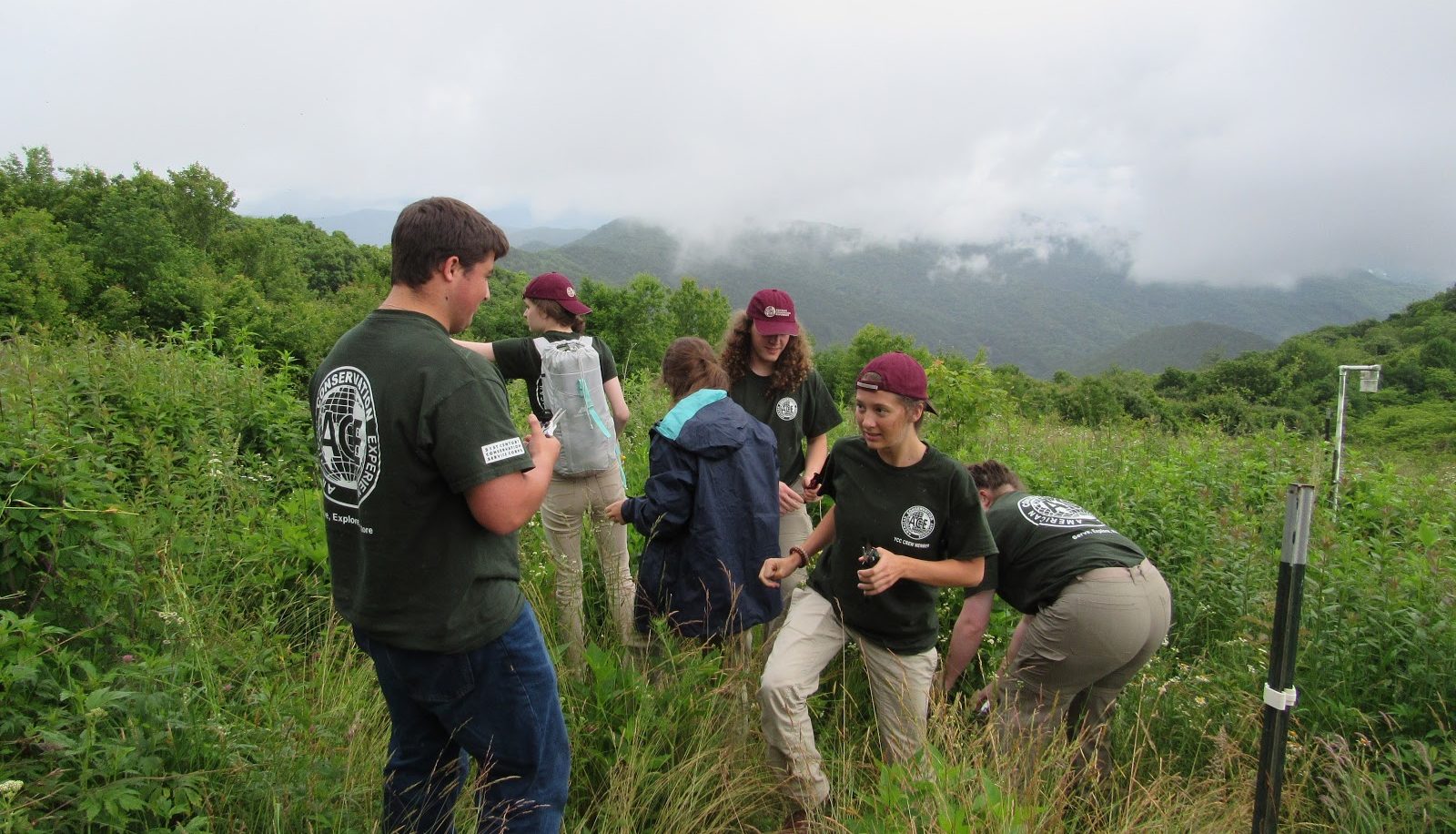Sixteen students participated in the Great Smoky Mountains National Park high school internship program during the summer of 2019. They spent six weeks learning about different roles of rangers and participating in park projects. This guest blog post by Morgan Proctor is one of 10 posts written by the interns.
Friends of the Smokies has help fund the GSMNP high school internship program for 18 years. For 2020, FOTS has pledged $32,000 to fund the intern stipends.
by Morgan Proctor
Swain County High School graduate
Bryson City, North Carolina
Now attending Western Carolina University
As a senior fresh out of high school, I was sure what I wanted to do as I transition into college. I chose to study environmental science and wildlife ecology as my major.

I signed up for the ACE (American Conservation Experience) internship because I knew it would help me to learn about the field I could go into.
The ACE internship, working in the Great Smoky Mountains National Park, changed my career plan to work with undomesticated animals.
Learning about ozone and its effects on high elevation plants and being part of the research initiative to study ozone’s damage on plants made me realize that was the field I wanted to study.
Ozone Garden
During our summer internship in GSMNP, the other ACE interns and I took frequent trips to Purchase Knob (North Carolina) where the ozone garden is located.
Each intern was assigned two or more crown beard plants in the garden to monitor for the duration of the program.
Our instructions were to measure and record the height of the plant, the number of leaf pairs, budding and blooming stages of the plant. We also were to determine occurrences of necrosis, chlorosis, and purpling (ozone damage) on the leaves.
We learned how to identify the difference between necrosis, chlorosis and ozone damage.
Scientific terminology
Chlorosis is the change in coloration of the leaf, which causes it to turn yellow and eventually leads to necrosis.

Necrosis is tissue deterioration on the plant that causes it to turn brown on both sides of the leaf and eventually fall off.
Ozone damage is caused by chemicals, such as VOC and NOx, in the atmosphere that can become dangerous at high elevation.
Volatile organic compounds (VOC) are classified as everyday odors, such as freshly cut grass or spraying perfume. NOx, is classified as vehicle and factory emissions.
The mixture of VOC, NOx and sunlight creates a respiratory irritant for humans.
We also learned about the two different forms of ozone – ground level ozone and stratospheric ozone.
Ground level ozone can cause tissue damage, which is hazardous for living things and the environment.
Stratospheric ozone is beneficial to living things because it protects the earth from the sun’s harmful rays.
Analyzing plants for ozone damage
The reason we observed the crown beard plant is because it is considered an “adequate bioindicator” that can show signs of ozone damage on the tops of the leaves.

In order to check for ozone damage on the crown beard plants, we had to look for purpling on the leaf. We also had to note whether there was necrosis or chlorosis forming on the plant’s leaves.
Necrosis looks similar to purpling, but as I learned, shows up on both the topside and underside of the leaf. Purpling of the leaf, which is a sign of ozone damage, does not show up on the underside of the leaves.
Working in the ozone garden made me realize that there is more to the Great Smokies National Park than its large mammal friends.
Importance of research
The experience helped me to realize that I can create a great impact by studying and observing the different effects that human activity and atmospheric pollution have on plants.
This was by far my favorite activity during the internship program because it made me feel like a scientist.
The rangers and other instructors always were helpful and they made learning about ozone damage to plants easy to understand.
Conducting research with the crown beard plants made me realize how the actions we take make a bigger impact that we do not notice every day.
***
Support GSMNP high school internships
For six weeks during the summer, the high school interns worked with rangers, Teachers in the Parks and volunteers on projects in the park to learn more about GSMNP and to get a feel of what being a park ranger is like.
Sixteen students from North Carolina and Tennessee participated in the program during the summer of 2019. This is the tenth guest post written by one of the GSMNP interns about their experiences this past summer.
Friends of the Smokies has helped support the GSMNP High School Internship Program for 18 years. For 2020, FOTS has pledged $32,000 to support 16 interns from North Carolina and Tennessee and three interns specifically from Swain County. You can help support the GSMNP internship program with a donation.
A special thanks to Ranger Erin Lamm, who coordinated the North Carolina interns, and Ranger Jessica Snow, who coordinated the Tennessee interns, for their assistance with the interns’ blog posts.
You can support the GSMNP high school summer internship program or support other education programs that FOTS funds, including Teachers in Parks, Parks as Classrooms, the Kathryn McNeill Endowment that funds an education specialist, and the Park Liaison program at the Cherokee School.

